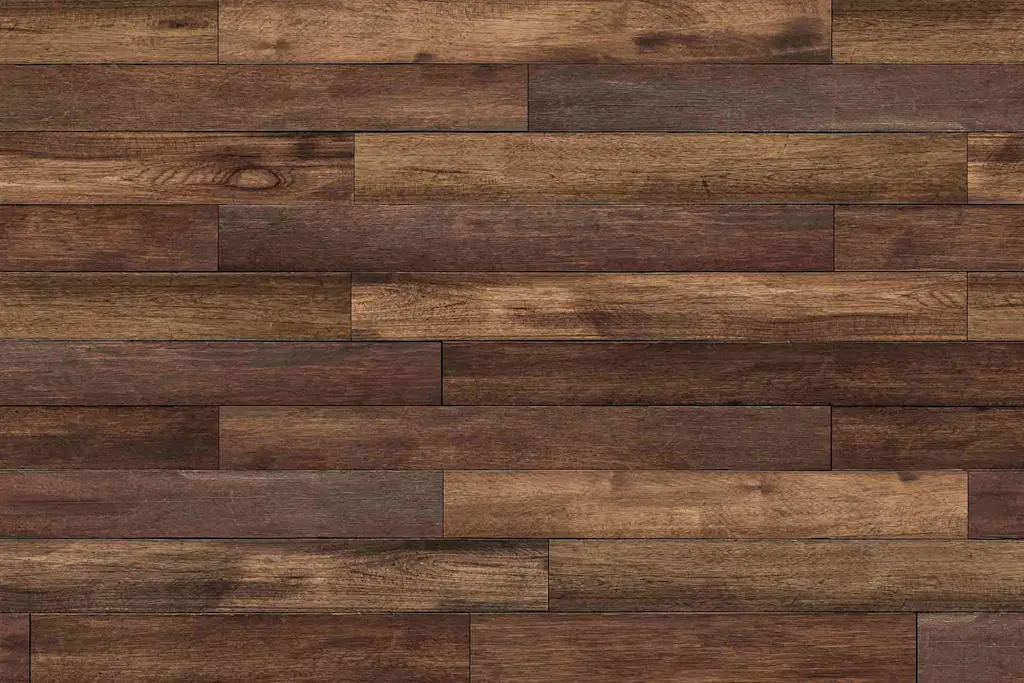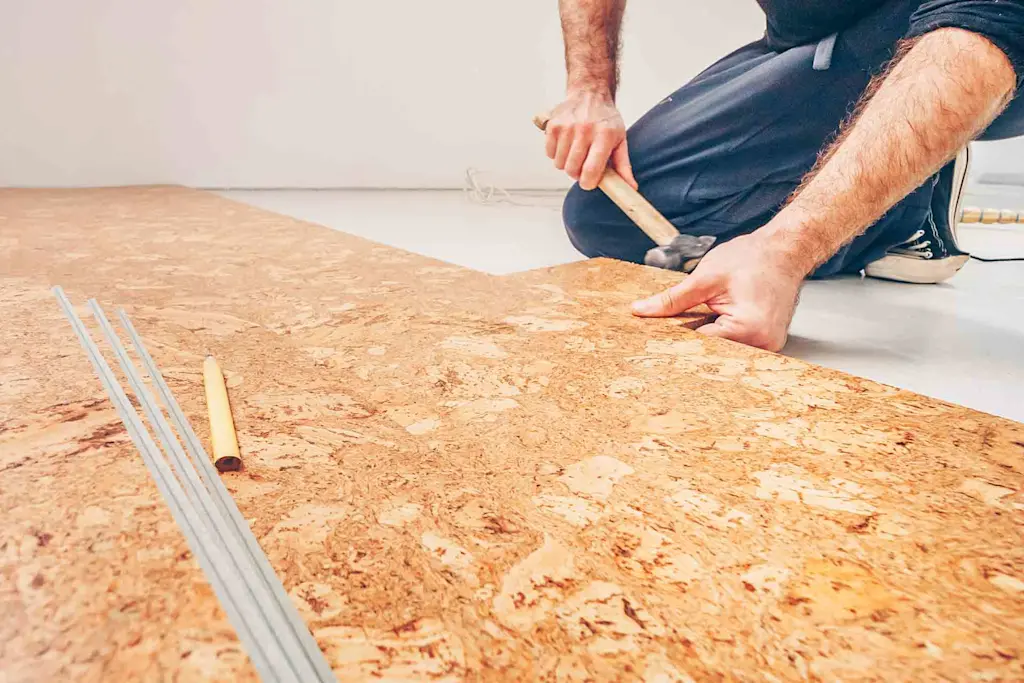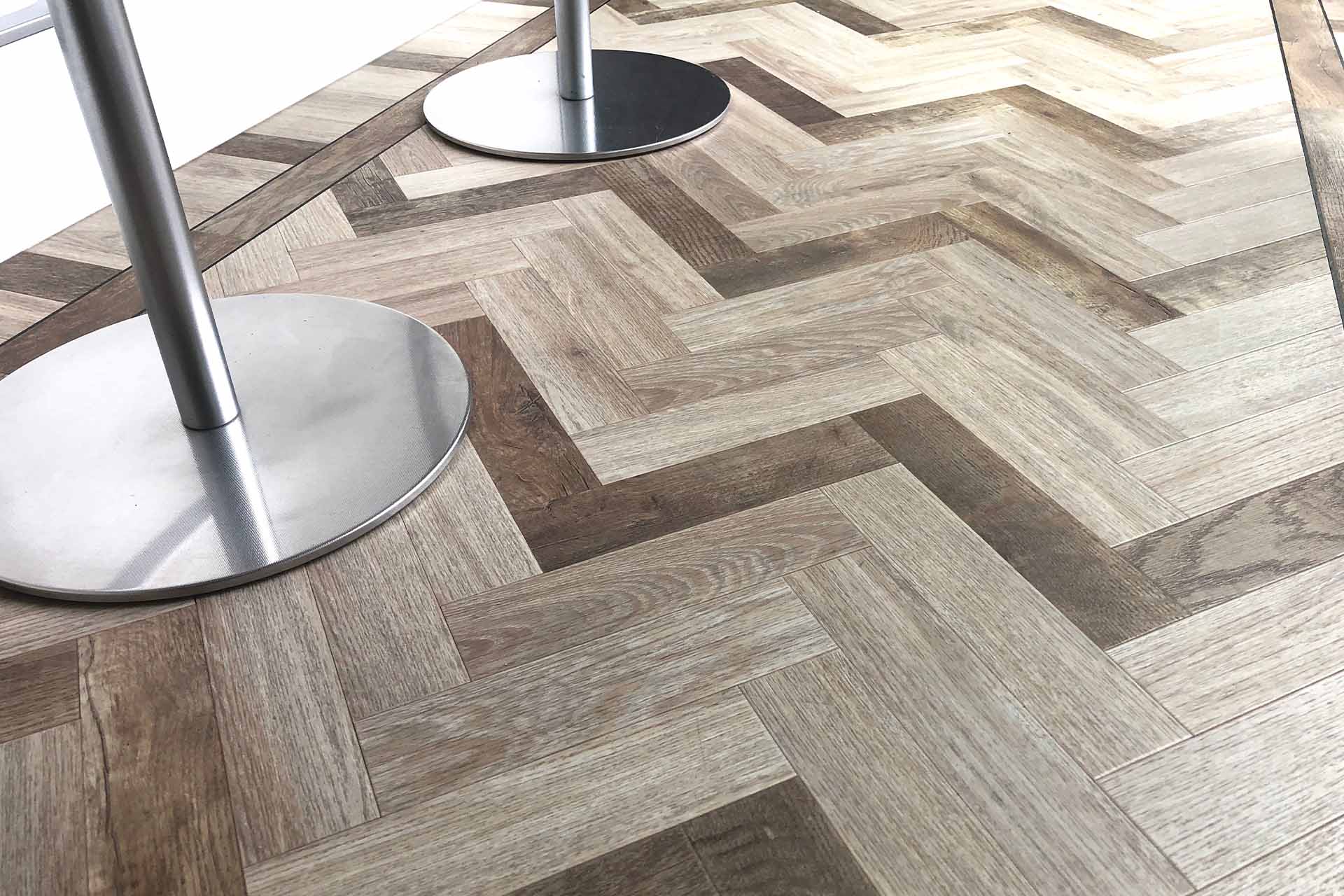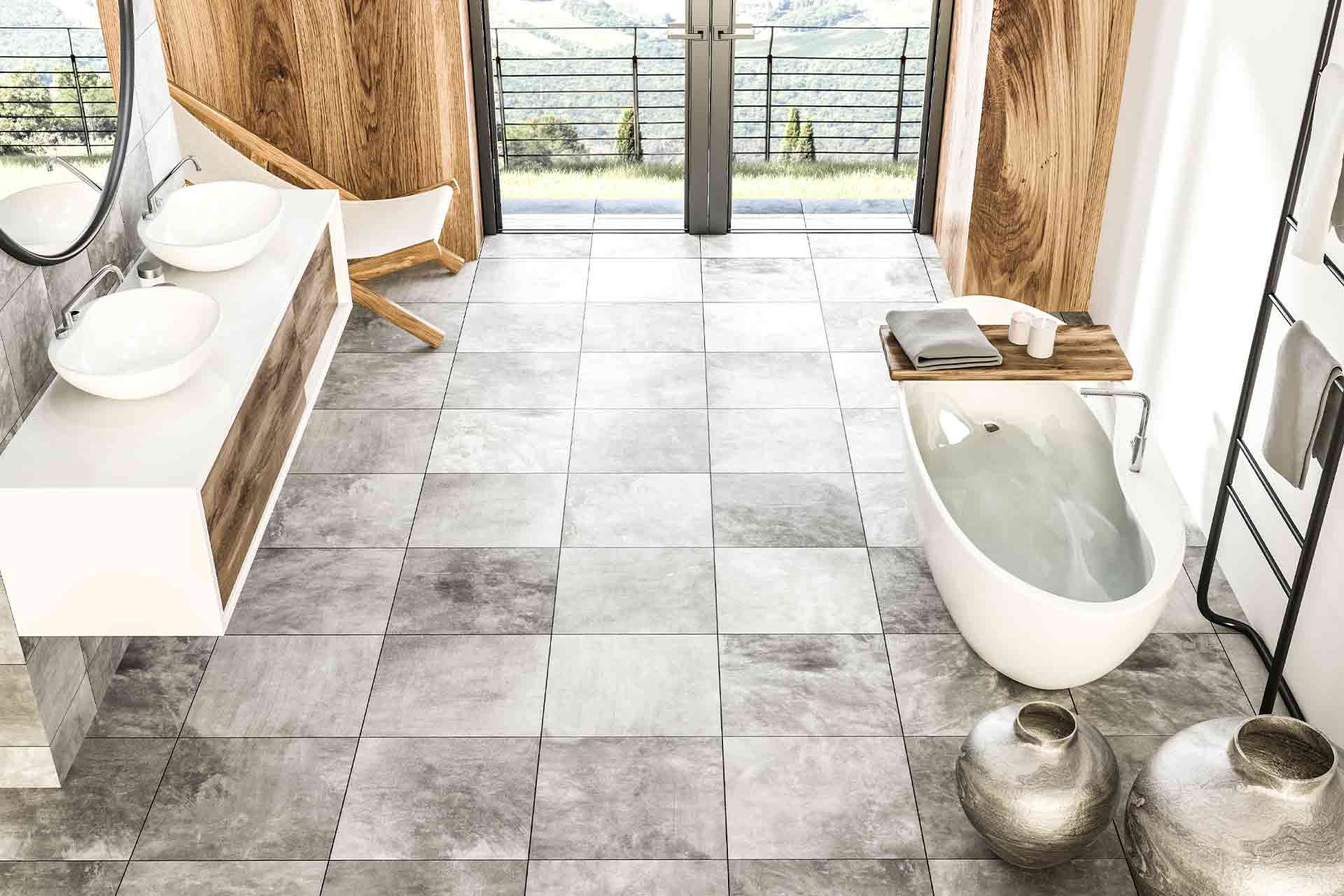Blog>Expert Advice>Eco flooring guide
Last updated: 23 March 2023
Eco flooring guide
Being environmentally conscious has never been more important. Not only are green products and practices helping to make the world a better place, but by incorporating sustainable materials in your home, you could help to add value too. In other words, opting for eco flooring is a done deal.

Being environmentally conscious has never been more important. Not only are green products and practices helping to make the world a better place, but by incorporating sustainable materials in your home, you could help to add value too. In other words, opting for eco flooring is a done deal.
But what are your options when it comes to sustainable flooring? And what should you be looking for?
Here, we’ll explore everything to do with eco flooring, so you can build an environmentally-friendly home from the ground up.
What is eco-friendly flooring?
Eco-friendly flooring, also known as ecological flooring or environmentally-friendly flooring, is flooring that has as little impact as possible on the environment.
Usually, eco flooring is sourced from natural materials and not made with chemicals.
That said, eco-friendly flooring isn’t just about the materials the flooring is made of. It’s also about where it’s come from. For instance, consider whether the manufacturer uses sustainable practices.
Similarly, flooring that’s not made from renewable materials could still be seen as eco-friendly if it’s been reused or recycled.
What to look for in eco flooring
So, you’re sold on using eco flooring for your home, but where do you start? Here are some things to consider when you’re looking at eco-friendly flooring options.
Material. Is the flooring made form natural and renewable resources?
Ethics. Does the manufacturer source their products sustainably? Do they use recycled materials?
Lifecycle. Long-lasting floors are better for the environment – even if your floor is made from natural materials, it can still cause harm to the environment if you throw it away after a few years, especially if it’s not biodegradable.
Toxicity. Materials that have a high level of volatile organic chemicals (VOCs) are bad for air quality (including adhesives or finishes). Choosing materials with low VOC levels will be better for the planet and your own health too!
Sustainable flooring materials
When it comes to sustainable flooring, here are some materials to consider.
Cork
Bamboo
Rubber
Wool carpet
Carpet made of recycled plastic bottles
Glass tiles
Best sustainable flooring options
There’s no one best eco-friendly flooring option. Instead, the best sustainable flooring for you will depend on a number of factors. These include:
Aesthetics. Consider your tastes and what vision you have for your home.
Budget. Some eco-friendly flooring options are pricier than others.
Room of the house. Some rooms will have special flooring needs, for instance, bathroom flooring will need to be resistant to water.
Durability. Think about how durable your flooring needs to be – for instance, is it for a high-traffic area?
See the tradespeople we've checked and recommend for your job
Sustainable wood flooring
Wood is the only renewable choice of building material for flooring, which makes it ideal for those on the hunt for eco-friendly flooring options. It also requires little energy to manufacture and creates very little waste.
That said, not all wood is equal when it comes down to eco credentials. Wood is sourced from trees, so using trees that grow quickly is a great way to ensure that they can be quickly replaced.
Equally, trees that are considered endangered will generally be less sustainable. So, opting for wood from commonly-grown trees – like oak and pine – isn’t a bad idea as long as the wood is harvested responsibly.
Just make sure to look out for the FSC logo when you’re looking for sustainable wood flooring. Companies or products that display this logo are FSC-certified, which means their wood has been harvested from forests that are environmentally conscious and responsibly managed.
Wood flooring costs tend to vary hugely, depending on the type of wood you opt for. For the materials alone, you’ll be looking at around £30 per m2 for pine flooring or £80+ per m2 for high-end hardwood flooring.
Wooden flooring: Cost breakdown [year]
Discover the cost of wooden flooring in the UK, including material prices, installation costs, and how it compares to engineered wood, laminate, and LVT.
Sustainable bamboo flooring
Bamboo is one of the most sustainable types of wood flooring out there – if not the most sustainable. This is because bamboo is a fast-growing plant. That’s right, it takes just three to five years to mature, rather than 10 to 20 years like most softwoods (or decades for hardwoods!).
Bamboo is also a regenerating grass, with roots that aren’t damaged during harvesting. In other words, you don’t need to replant it like you do with trees, making it very renewable.
Not only is bamboo good for the planet, but it looks great and it’s also very durable and versatile. In fact, there are over 1,500 species of bamboo to choose from! It’s also not too hard on your bank balance – bamboo flooring costs on average around £18 to £33 per m2.
Just bear in mind that most bamboo comes from tropical or subtropical regions. So, depending on where you live, getting your hands on it might involve high emission levels through the distribution process.
Eco-friendly hardwood flooring
Although trees that are used to produce hardwood flooring take much longer to mature than bamboo, hardwood flooring can still be considered eco-friendly.
To start with, this flooring is extremely durable. In fact, with the right care and maintenance, it can last for over 100 years! This is in contrast to linoleum and laminate, which have an estimated life span of 15-25 years.
On top of that, hardwood flooring is one of just a few flooring options that can be reused. It can be sanded back and restrained to suit many different design plans. Plus, if the wood is too damaged to be used again as flooring, it can be recycled for other projects, like furniture or panelling.
If you want to be as eco-friendly as possible, consider using local, reclaimed hardwood for your flooring in the first place. That way, you’ll reduce the carbon footprint of your flooring as much as possible.
Cork flooring sustainability
Cork is becoming increasingly popular for flooring. It comes from the bark of the cork oak tree. This means the trees themselves don’t need to be cut down – instead, the bark grows back within three years, which makes cork a very renewable resource!
If you want your flooring to be even more eco-friendly, you can even get cork floors that are made from the recycled corks of wine bottles! It’s not just a sustainable move, but also one that makes a stunning feature.
Cork flooring has lots of benefits besides its eco credentials. It repels mold and mites, it’s sound-proof, it’s a great insulator and it’s comfortable to walk on. What more could you want?
For both installation and materials, the typical cork flooring cost is around £40 to £70 per m2.

Eco-friendly rubber flooring
Rubber is a sustainable product that’s harvested from the sap that comes out of rubber trees. Tapping trees for sap won’t necessarily harm them, which means that manufacturing rubber is undoubtedly easier on the environment than most other flooring materials.
Usually, rubber flooring is used in settings like education, fitness, and healthcare. This is because it performs well in high-traffic areas and it’s great at absorbing impact, making it very safe.
However, there’s no reason why you couldn’t use it in the home. Not only is it comfortable and easy to clean, but it also comes in a range of design options.
The only downside is that it’s a bit more expensive than some other sustainable flooring options. As a rough guide, you can expect to pay around £55 per m2 for rubber floor tiles or around £150 per m2 for a poured resin floor.
Eco-friendly linoleum flooring
Linoleum is currently making a comeback, and rightly so! While it’s often associated with vinyl, the two are like chalk and cheese when it comes to renewability.
Linoleum is made entirely of biodegradable materials like linseed oil, tree resin and cork dust – all materials that are highly renewable. Better still, it’s flame retardant, resistant to moisture, durable and even comes in a wide range of colours and designs.
The downside? Linoleum is more expensive than vinyl flooring. We’d say it’s worth the extra to save the planet though!
See the tradespeople we've checked and recommend for your job
Is there eco-friendly vinyl flooring?
A lot of vinyl flooring contains high levels of VOCs. Plus, vinyl isn’t a renewable material. So, as a general rule, it’s best avoided if you’re looking for eco flooring.
That said, in recent years, many brands have made it their mission to reduce the impact that producing vinyl has on the environment.
For example, some brands now incorporate natural materials like chalk in the production of their vinyl. And many incorporate recycled PVC, helping to extend the lifecycle of existing products. Brands that specialise in eco-friendly vinyl flooring also try to minimise their use of VOCs as much as possible.
Another benefit of vinyl flooring is that it’s extremely durable. Not only does this mean it won’t have to be replaced for a long time, but it also makes it ripe for reusing. Some companies even produce recyclable vinyl flooring.
Luxury vinyl tiles cost around £35 per m2 for mid-end quality, although brands that make sustainability a core focus are likely to be on the higher end pricing-wise.
LVT flooring cost guide
Considering having LVT flooring in your property? Then be sure to read our in-depth LVT flooring cost guide to find out all you need to know.
What’s the best sustainable kitchen flooring?
Kitchen flooring needs to be durable enough to withstand heavy foot traffic. And, at the heart of the home, it needs to look great as well.
Depending on your household, it might have other boxes to tick too – for instance, do you need it to work with underfloor heating? Do you have the time to maintain and seal a floor regularly?
Here are a few ideas for sustainable kitchen flooring:
Engineered wood flooring has a thin veneer of finished wood backed by several layers of more wood. This makes it less likely to warp when faced with temperature changes or humidity.
Linoleum flooring is not just made of natural materials, but it’s also inherently antimicrobial – a handy trait for a kitchen!
Cork flooring is warm and comfortable underfoot, which is handy in a room we stand in for long periods of time. Although it’s not waterproof, it is water-resistant and hypoallergenic. Just watch out because cork flooring isn’t great with underfloor heating.
Rubber flooring is great in high-traffic areas and absorbs impact. So, it’s another good choice for a room where you stand a lot. As a bonus, it’s also easy to clean.
Polished concrete flooring might not immediately sound like an eco-friendly choice. However, if your home uses concrete as a foundation like most do, polishing existing concrete can avoid any further materials from being introduced, including VOCs. It’s also energy efficient, easy to clean and looks great!

Modern kitchen floor cost guide
There are so many kitchen floor styles available, from herringbone wood-effect vinyl to bold patterned tiles. No matter what type of flooring you choose, it’s important to consider your budget and think about any other elements of your kitchen that may also need work.
What’s the best eco friendly bathroom flooring?
Bathroom flooring tends to get exposed to high levels of humidity, and will need to be able to withstand splashes and spills. So, when it comes to the bathroom, we’d suggest looking for eco-friendly waterproof flooring.
Here are a few eco-friendly bathroom flooring options.
Recycled glass tiles are about as eco-friendly as you can get. They’re also impervious to water and resistant to stains, mold, and mildew, making them ideal for high-traffic areas like showers.
Stone tiles are durable and don’t require much processing, making for a good eco-friendly flooring option. Stone’s natural texture also makes it slip resistant – ideal for a bathroom!
Rubber is naturally water-resistant and easy to clean. It’s also an anti-slip material, which makes it perfect for households with young children.
Linoleum is water-resistant as well as being biodegradable and made from natural materials. So, it’s a decent eco-friendly bathroom flooring option.
Bathroom flooring ideas: Inspiration for materials, non-slip and vinyl flooring
Use our stunning bathroom ideas to create a tranquil, spacious room no matter the size. With fantastic ideas for non-slip, vinyl & small bathroom flooring.
FAQs
What is the most eco-friendly flooring?
The most eco-friendly flooring material is often considered to be bamboo. This is because it’s extremely renewable – bamboo takes just three to five years to mature and its roots aren’t damaged during harvesting.
What is the most eco-friendly flooring in the UK?
Although bamboo is a very sustainable material, it mostly comes from tropical or subtropical regions. So, transportation to the UK can result in high emission levels. For this reason, the most eco-friendly flooring in the UK is probably recycled or reclaimed wood, as you’ll be extending the lifespan of an existing renewable product.
See the tradespeople we've checked and recommend for your job
See the tradespeople we've checked and recommend for your job






